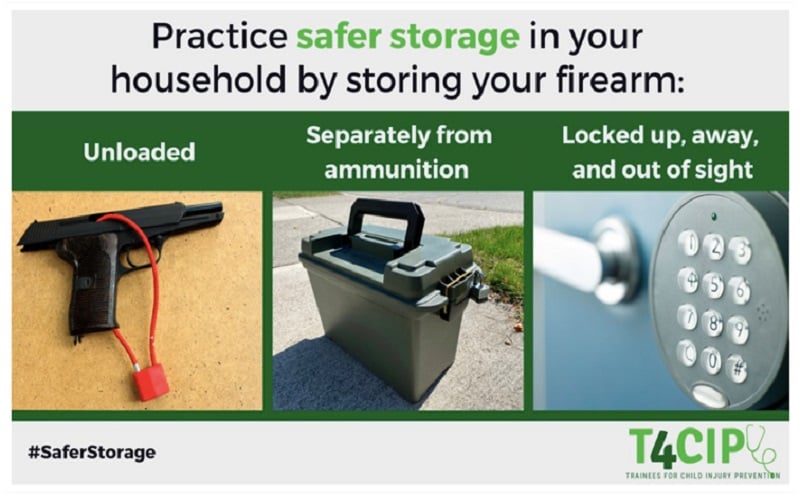
Taking Aim at Preventing Firearm-Related Injuries: The Role of Emergency Medicine Physicians
Keisha Fraser Doh, MD
Children’s Healthcare of Atlanta
Atlanta, GA
In the realm of emergency medicine, our responsibilities extend beyond immediate treatment to include proactive measures in injury prevention. While traditionally not considered a preventative specialty, our awareness and actions can significantly impact the most common cause of death in children and adolescents: firearm-related injuries.
June was designated as Gun Violence Awareness Month, as it marks the beginning of summer—a period when trauma and incidents of gun violence tend to surge, a reality well-known to emergency medicine physicians. Moreover, June 21st holds significance as the first day of summer. It is on this date that both the American Academy of Pediatrics and the Brady Campaign recommend emphasizing the importance of inquiring about unsecured firearms in households where children may be present. This timely reminder underscores the need for heightened vigilance and proactive measures to ensure the safety of our children amidst increased outdoor activities, play dates and social gatherings during the summer months.
The Scope of the Issue
According to the Gun Violence Archive, the statistics are sobering in 2023 alone, 1,682 children aged 0–17 years lost their lives to firearms, with an additional 12 children injured daily. As emergency medicine physicians, we are often the first point of contact for these victims, making us instrumental in initial assessment, education, and record-keeping.
Key Roles of Emergency Medicine Physicians
- Accurate Documentation: Documenting detailed histories from emergency medical services (EMS), families, and bystanders is crucial for understanding the circumstances surrounding firearm-related injuries accurately.
- Precise Diagnosis Coding: Properly coding diagnoses—whether firearm injuries are unintentional, assault-related, suicidal, or undetermined—provides essential data for developing targeted prevention strategies.
- Educating on Safe Firearm Storage: Just as we promote helmet use for biking and seat belt use in cars, advocating for the safe storage of firearms—unloaded, locked up, and separate from ammunition—can drastically reduce the risk of unintentional injuries and deaths.
Our Role in Prevention
By ensuring accurate documentation, obtaining thorough histories, and providing education on firearm safety in the emergency department, we play a vital role in injury prevention. Additionally, through regional advocacy efforts and collaboration with public health experts, we can work towards systemic changes to reduce the prevalence of firearm-related injuries.
Call to Action
As emergency medicine physicians, we must strive to be part of the solution in preventing firearm-related injuries. By recording accurate information, educating caregivers, and advocating for safer practices, we can contribute to reducing the number one cause of death in children and adolescents. Let us continue to prioritize injury prevention efforts and work towards a safer future for our patients.
Reference
1. Firearm Safety: Ask Day. Trainees for Child Injury Prevention (T4CIP). October 2021. Accessed June 19, 2024. https://www.preventchildinjury.org/toolkits/firearm-safety-ask-day.


